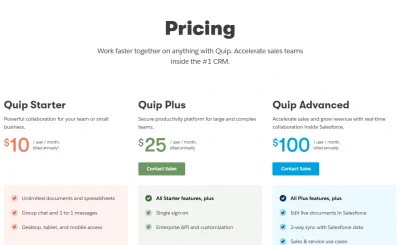Imagine this: a customer is making a pasta dinner. Their hands are covered in flour. They need more olive oil. Instead of wiping everything down, picking up their phone, and typing in a search, they just… ask. “Hey Google, order my usual extra virgin olive oil.” And just like that, the order is placed.
That’s the magic—and the sheer convenience—of voice commerce. It’s not science fiction anymore. It’s a tangible, growing sales channel that’s reshaping how people shop. And honestly, if you’re not thinking about how to implement it, you’re potentially leaving money on the table for your competitors to scoop up.
Why Your Business Can’t Afford to Ignore Voice Commerce
The numbers don’t lie. Billions of voice assistants are in use globally, nestled in smart speakers, phones, and even cars. While the initial hype was about playing music and checking the weather, shopping is the next logical frontier. It’s all about removing friction. Every step you eliminate between a customer’s thought and their purchase—like typing, clicking, or filling out forms—dramatically increases the chance they’ll actually complete the buy.
Think of it as the ultimate express checkout lane. It’s fast, it’s simple, and it caters to our modern desire for instant gratification. This is especially true for routine purchases. We’re talking about replenishment commerce—the stuff people buy over and over again.
Where to Start: A Realistic Implementation Roadmap
Okay, so you’re sold on the idea. But how do you actually do it? Let’s break it down into manageable steps. You don’t need to boil the ocean on day one.
Step 1: Audit Your Product Catalog for Voice-Friendliness
Not every product is a great candidate for voice shopping—at least not yet. You know? You’re probably not going to buy a custom-engraved necklace or a high-end camera lens via voice command for the first time. Start with your low-consideration, high-repeat items.
- Consumables: Coffee pods, pet food, diapers, skincare products.
- Essentials: Toilet paper, paper towels, laundry detergent.
- Brand-Loyal Items: Things customers consistently reorder because they trust your brand.
Focus here first. This is your beachhead.
Step 2: Optimize for “Voice Search” — It’s Different
People don’t talk to their devices the way they type into a search bar. Typing is “best running shoes.” Speaking is, “What are the best running shoes for flat feet?” This is the world of long-tail, conversational keywords.
You need to bake this into your voice search optimization strategy. Revamp your product descriptions and content to answer questions. Use natural language. Think about the phrases a real person would use when speaking aloud to order your product.
Step 3: Choose Your Technical Path
Here’s the technical part, but don’t panic. You have a couple of main avenues:
- Voice-Activated Skills/Actions: Building a custom app for Alexa or Google Assistant. This gives you more brand control but requires more development resources. It’s like building a mini-app within their ecosystem.
- Integrating with Existing Platforms: Using services that plug your existing e-commerce store (like Shopify or BigCommerce) into voice platforms. This is often faster and more practical for many businesses starting out.
The best choice depends entirely on your budget and technical team.
The User Experience is Everything
If the process is clunky, it’s dead on arrival. The beauty of voice is its simplicity. Your implementation must protect that.
- Simplify Choice Architecture: Presenting too many options via voice is overwhelming. Guide the user. “You last ordered Brand X Coffee Pods. Would you like to reorder?” Or, “I found three types of hand soap. Your bestseller is Lavender Bliss. Should I add it to your cart?”
- Streamline Checkout & Payment: This is non-negotiable. Payment information must be pre-loaded and secure. The whole point is a hands-free, seamless transaction. If a user has to manually enter payment details at the end, you’ve lost them.
- Allow for Visual Fallbacks: Sometimes people want to see a product image or confirm a price. Ensure that for more complex queries, the result can be sent to a smartphone or screen for final visual confirmation. This hybrid approach builds trust.
Measuring Success: What to Track
You can’t manage what you don’t measure. Voice commerce analytics are still evolving, but you should focus on a few key metrics from the start.
| Metric | Why It Matters |
| Voice-Reorder Rate | Tracks how many customers use voice for repeat purchases—the core use case. |
| Cart Abandonment Rate | If this is high, your checkout flow is failing the voice test. |
| New Customer Acquisition | Are you attracting new users specifically through voice channels? |
| Average Order Value (AOV) | Compare voice AOV to web and mobile. It’s often different. |
The Human Hurdles (And How to Jump Them)
Let’s be real—it’s not all smooth sailing. People are still… wary. The biggest barriers are trust and privacy. “Is it really secure?” “Is it listening to me all the time?” You need to proactively address these concerns with crystal-clear privacy policies and secure, transparent data handling. Build trust by being trustworthy.
Another hurdle? The lack of visual discovery. You can’t browse a shelf via voice. This is why your initial product selection and your ability to make smart, personalized recommendations are so utterly critical. You’re not just a vending machine; you’re a helpful shop assistant.
The Future is Conversational
Implementing voice commerce isn’t about chasing a shiny new toy. It’s about meeting a fundamental shift in consumer behavior. It’s about being present in the micro-moments of your customers’ lives—in their kitchens, their cars, their living rooms.
Start small. Think about replenishment. Optimize for how people actually speak. And focus relentlessly on a frictionless experience. The goal isn’t to replace your website or mobile app. It’s to add another, deeply intuitive layer to your customer’s journey. A layer that listens, understands, and delivers—literally. The conversation between you and your customers is changing. It’s time to make sure you have a voice in it.







